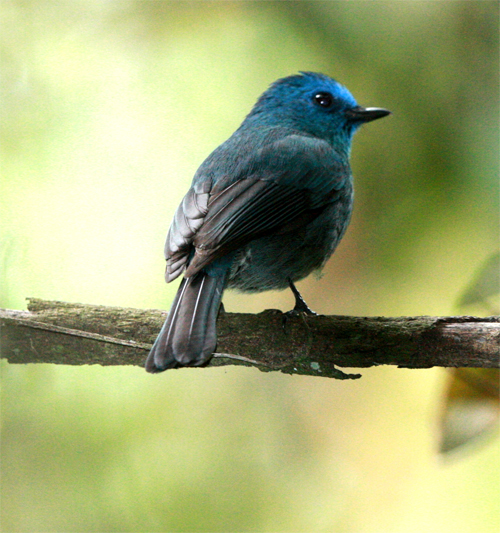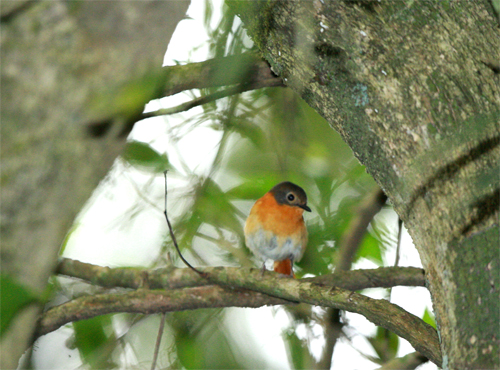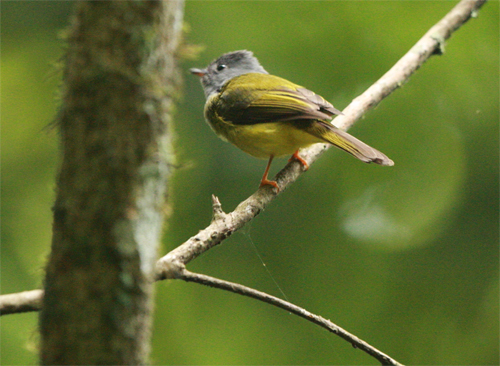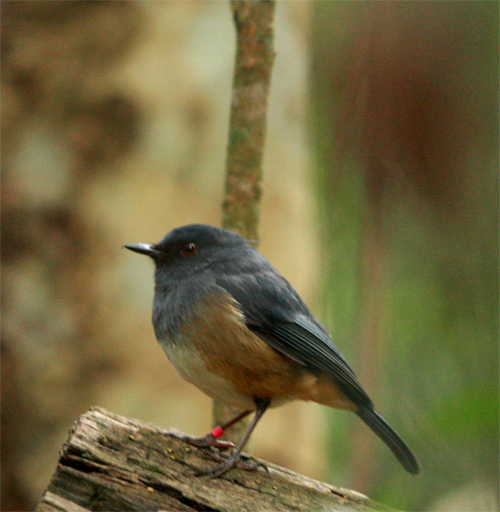I had three hours, one and a half on an evening and one and a half next morning for watching birds in the Nilgiris. The bird watching was sandwiched by meetings and travel. The saving grace was that I was to stay at the forest inspection bungalow at Longwood shola near Kothagiri. I had heard of the place earlier, the little patch of montane evergreen forest protected as a water source by the local communities of the area. I may also have heard of it in the context of the chief minister of Tamil Nadu Jayalalitha who passed the place during her four monthly retreat to nearby estates. When that happens, it is difficult to stay at Longwood as her minions take over the place. But now, with elections on, everyone is in Chennai except those who are in Madurai; there is no one in Longwood and it is easy to walk through and see three species of bird endemics on one day.

The Nilgiri flycatcher first, a brilliant azure, darker than the Verditer and more dumpy, lighter than the Tickell’s but coloured all blue. A blob of brilliant blue flitting through the undergrowth. Then the Black chinned or Nilgiri laughing thrush, with a white stentorian eyebrow that gives it a military look momentarily, till it gives all that seriousness away with a cadence of chuckling sqwaks and chirrts. And finally that enigma amongst Western Ghats oddities the Nilgiri blue robin or the rufous bellied shortwing, neither a shortwing, nor really rufous bellied (the belly itself is white, the rufous flanks it.)

These were the prize catches, but there were other non-endemic yet interesting birds too. The grey headed canary flycatchers ruling the canopy, the orange and black flycatcher flitting away in the mid bush level (the female was seen eating a termite grub with great relish) and the Tickell’s leaf warbler, white supercilium boldly marking its olive face.


A Nilgiri Blue Robin (Myiomela (Brachypteris) major), with a pink bird band on it.
Photo: Vivek Menon / WTI
Read Vivek Menon’s previous photo-blog Regeneration of hope (Conservation Convictions) here.